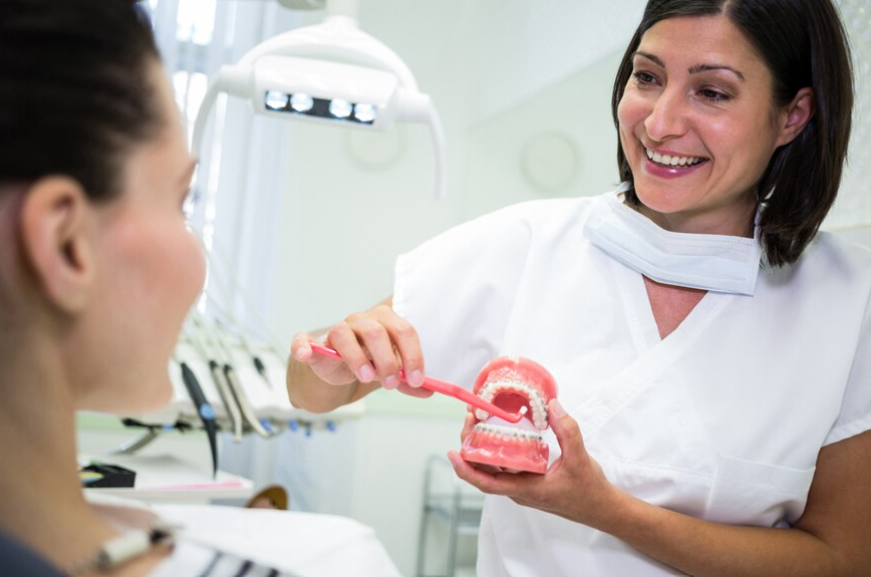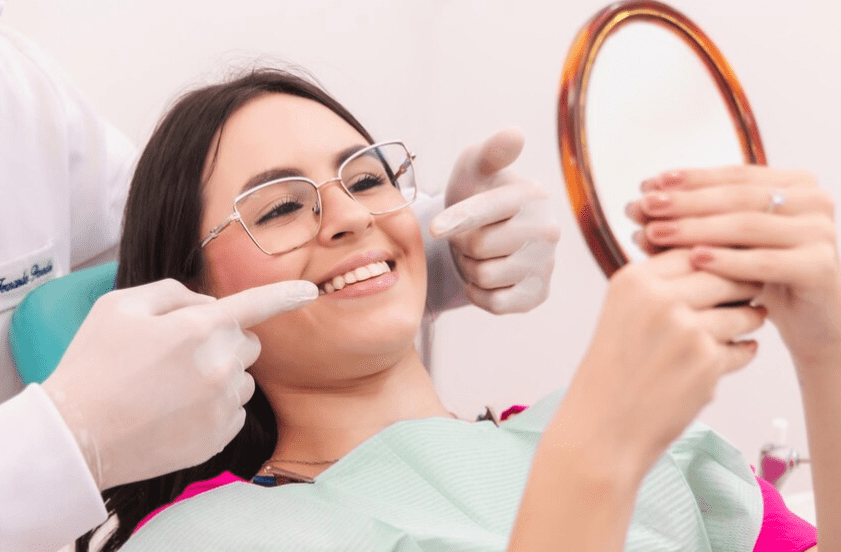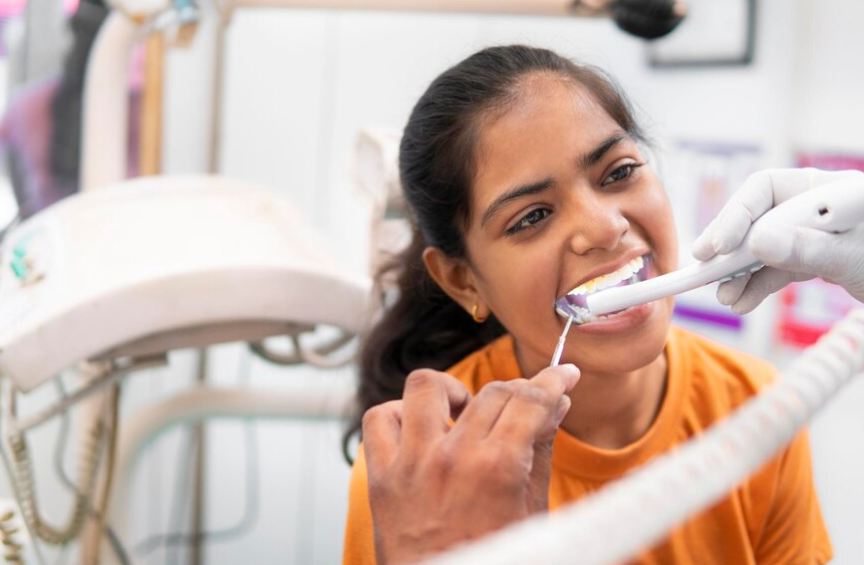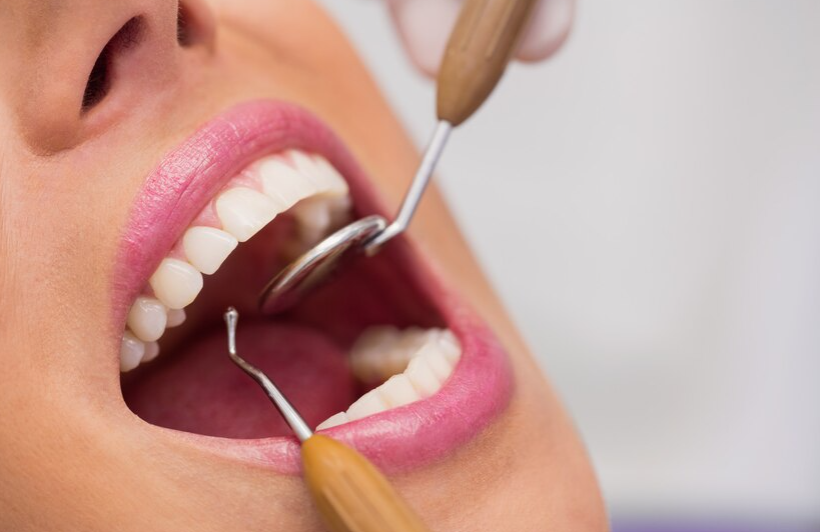The Importance of Gum Health: Understanding Gum Disease and Prevention Strategies
Gum health is often overlooked but is a crucial aspect of overall oral health. In this blog post, we’ll explore the importance of gum health, the impact of gum disease on oral and systemic health, and practical tips for maintaining healthy gums.
Gum disease, or periodontal disease, is indeed a prevalent condition that affects the gums and supporting structures of the teeth. Understanding its two primary stages, gingivitis and periodontitis, is crucial for recognizing its signs, preventing its progression, and seeking appropriate treatment.
- Gingivitis: This is the initial stage of gum disease and is characterized by inflammation of the gums. It typically occurs due to the buildup of plaque, a sticky film of bacteria that forms on the teeth. When plaque is not removed through proper oral hygiene practices such as brushing and flossing, it can irritate the gums, leading to inflammation. The symptoms of gingivitis include:
- Red, swollen, or tender gums
- Bleeding gums, especially during brushing or flossing
- Bad breath (halitosis)
- Receding gums
- Formation of pockets between the teeth and gums
If gingivitis is left untreated, it can progress to the more severe stage of gum disease, known as periodontitis.
- Periodontitis: Periodontitis occurs when gingivitis advances and causes damage to the bone and tissues that support the teeth. In this stage, the inner layer of the gum and bone pull away from the teeth, forming pockets that become infected. The body’s immune system responds to the bacteria, leading to further inflammation and damage. Symptoms of periodontitis may include:
- Persistent bad breath
- Receding gums, resulting in the appearance of longer teeth
- Loose or shifting teeth
- Changes in the way teeth fit together when biting
- Pus between the teeth and gums
- Sensitivity or pain when chewing
If left untreated, periodontitis can lead to tooth loss and may also contribute to other health problems such as cardiovascular disease and diabetes complications.
Prevention and early intervention are essential in managing gum disease. Good oral hygiene practices, including regular brushing and flossing, can help remove plaque and prevent the development of gingivitis. Additionally, routine dental check-ups and professional cleanings are crucial for detecting and treating gum disease in its early stages.
By understanding the signs and symptoms of gum disease, individuals can take proactive steps to maintain their oral health and seek timely treatment when needed.
Causes of Gum Disease:
Gum disease can be influenced by various factors, and understanding these contributors is key to prevention and management. Here are some common causes of gum disease:
- Poor Oral Hygiene: The primary cause of gum disease is the buildup of plaque, a sticky film of bacteria that forms on the teeth. When plaque is not removed through regular brushing and flossing, it can irritate the gums, leading to inflammation and gingivitis. Over time, untreated gingivitis can progress to periodontitis.
- Tobacco Use: Smoking and using other tobacco products can significantly increase the risk of gum disease. Tobacco use weakens the immune system, making it harder for the body to fight off infections, including those that affect the gums. Smoking also reduces blood flow to the gums, impairing their ability to heal.
- Genetic Predisposition: Some individuals may be genetically predisposed to gum disease. Certain genetic factors can affect the immune response and increase susceptibility to infections, including those that impact oral health. If gum disease runs in your family, you may have a higher risk of developing it yourself.
- Hormonal Changes: Hormonal fluctuations, such as those that occur during puberty, pregnancy, menstruation, and menopause, can affect the gums. These hormonal changes can make the gums more susceptible to inflammation and increase the risk of developing gingivitis. Pregnant women, in particular, may experience pregnancy gingivitis due to hormonal shifts.
- Certain Medical Conditions: Several systemic diseases and medical conditions can increase the risk of gum disease. These include diabetes, which affects the body’s ability to regulate blood sugar levels and can impair gum health. Other conditions such as HIV/AIDS and cancer treatments can weaken the immune system, making individuals more vulnerable to gum infections.
- Medications: Some medications, such as certain anticonvulsants, immunosuppressants, and calcium channel blockers, can affect gum health as a side effect. These medications may cause gum overgrowth (gingival hyperplasia) or increase the risk of gum inflammation.
By identifying and addressing these risk factors, individuals can take proactive steps to reduce their likelihood of developing gum disease and maintain optimal gum health. Practicing good oral hygiene, avoiding tobacco use, managing underlying medical conditions, and seeking regular dental care are essential strategies for preventing and managing gum disease.
Symptoms of Gum Disease:
Recognizing the symptoms of gum disease early is crucial for effective treatment and preventing complications. Here’s a bit more detail on each of those symptoms:
- Swollen, Tender, or Bleeding Gums: Healthy gums should be pink, firm, and not bleed easily. If you notice that your gums are swollen, tender to the touch, or bleeding when you brush or floss, it could be a sign of gum disease. This inflammation is often due to the buildup of plaque along the gumline, leading to irritation and infection of the gums.
- Persistent Bad Breath (Halitosis): Bad breath that doesn’t go away even with brushing, flossing, or using mouthwash could indicate gum disease. This odor is often caused by the bacteria present in the mouth, which thrive in the pockets formed between the teeth and gums as a result of gum disease.
- Receding Gums: Healthy gums should fit snugly around the teeth, forming a tight seal. However, as gum disease progresses, the gums may start to recede or pull away from the teeth, exposing more of the tooth’s surface and creating gaps or pockets between the teeth and gums. This recession can lead to sensitivity to hot or cold temperatures and an increased risk of tooth decay.
- Loose Teeth: In advanced stages of gum disease, the supporting bone and tissue around the teeth can become damaged, causing the teeth to become loose or shift position. This looseness is often a sign of severe gum disease, known as periodontitis, and may indicate significant damage to the structures supporting the teeth.
If you notice any of these symptoms, it’s essential to schedule an appointment with your dentist for a thorough evaluation and appropriate treatment.
Prevention Strategies:
Here are some practical prevention strategies for maintaining healthy gums:
- Practice Good Oral Hygiene: Brush your teeth at least twice a day with fluoride toothpaste and a soft-bristled toothbrush. Floss daily to remove plaque and food particles from between your teeth and along the gumline. Consider using an antimicrobial mouthwash to help reduce bacteria in your mouth.
- Quit Smoking: Smoking is a significant risk factor for gum disease. Tobacco use can weaken your immune system, making it harder for your body to fight off gum infections. Quitting smoking or using tobacco products can significantly improve your oral health and reduce your risk of gum disease.
- Eat a Balanced Diet: A diet rich in fruits, vegetables, whole grains, and lean proteins can help support overall oral health. Avoiding sugary snacks and beverages can help prevent plaque buildup and reduce your risk of developing gum disease. Drinking plenty of water can also help wash away food particles and bacteria that can contribute to gum disease.
- Schedule Regular Dental Checkups and Cleanings: Regular dental visits are essential for maintaining healthy gums and catching any signs of gum disease early. Your dentist can perform a comprehensive oral exam, including checking for signs of gum disease, and provide professional cleanings to remove plaque and tartar buildup from your teeth and gums.
- Manage Stress: Stress can weaken your immune system, making you more susceptible to gum infections. Practice stress-reduction techniques such as deep breathing, meditation, or yoga to help manage stress and support your overall health, including your gum health.
- Use a Mouthguard: If you grind or clench your teeth at night, consider using a mouthguard to protect your teeth and gums from damage. Grinding or clenching can put excessive pressure on your teeth and gums, leading to gum recession and other oral health problems.
Incorporating these preventive measures into your daily routine can help protect your gums and reduce your risk of developing gum disease. If you have any concerns about your gum health or notice any signs of gum disease, be sure to consult with your dentist for personalized advice and treatment.
Treatment Options:
- Non-Surgical Interventions:
- Scaling and Root Planing: This deep cleaning procedure involves removing plaque and tartar from below the gumline (scaling) and smoothing out the roots of the teeth (root planing) to remove bacteria and promote gum healing.
- Antibiotics: Your dentist may prescribe antibiotics, either in pill form or as a mouth rinse, to help control bacterial infection and reduce inflammation in the gums.
- Laser Therapy: Some dentists use laser technology to remove bacteria and infected tissue from the gums, promoting healing and reducing inflammation.
- Surgical Procedures:
- Gum Grafting: In cases where gum recession has occurred, gum grafting surgery may be necessary to cover exposed tooth roots and protect them from further damage.
- Bone Grafts: If gum disease has caused damage to the bone supporting the teeth, a bone graft may be necessary to regenerate bone tissue and strengthen the jawbone.
- Ongoing Maintenance:
- Regular Dental Cleanings: After initial treatment, it’s essential to maintain regular dental visits for professional cleanings and checkups to monitor gum health and prevent recurrence of gum disease.
- Improved Oral Hygiene: Your dentist or dental hygienist can provide guidance on proper brushing and flossing techniques to help you effectively remove plaque and prevent gum disease.
Early intervention is crucial in managing gum disease and preventing further damage to oral health. Seeking professional dental care as soon as symptoms arise can increase the likelihood of successful treatment and help preserve your teeth and gums in the long term. If you’re experiencing any signs of gum disease, don’t hesitate to schedule an appointment with our expert dentist Dr. Pooja Jain for evaluation and personalized treatment recommendations.
In conclusion, maintaining healthy gums is essential for overall oral health and well-being. By understanding the importance of gum health, recognizing the signs and symptoms of gum disease, and implementing preventive strategies, individuals can protect their gums and preserve their smiles for years to come.




